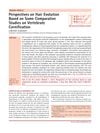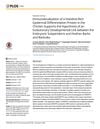21 citations
,
September 2005 in “The anatomical record. Part A, Discoveries in molecular, cellular, and evolutionary biology/Anatomical record. Part A, Discoveries in molecular, cellular, and evolutionary biology” Caspase-14 is important for skin and hair development in all mammals.
276 citations
,
January 2005 in “International review of cytology” 20 citations
,
September 2004 in “Journal of Anatomy” The study examined the inner root sheath (IRS) of hairs in monotremes, marsupials, and placental mammals, focusing on the localization of trichohyalin and transglutaminase using electron microscopy and immunocytochemistry. It found that trichohyalin is recognized across these species, suggesting common epitopes. The IRS in monotremes was multistratified but lacked a Henle layer, indicating a simpler ancestral structure. The research proposed that the evolution of the IRS, with its stratified layers, facilitated the safe exit of hair through the epidermis, crucial for mammalian hair development. The study also speculated on the evolutionary transition from reptilian scales to mammalian hairs, highlighting the role of dermal papillae in this process.
38 citations
,
July 2004 in “Journal of experimental zoology. Part B, Molecular and developmental evolution” Reptilian scales, feathers, and hairs evolved from changes in skin cell interactions.
199 citations
,
January 2004 in “The International Journal of Developmental Biology” The document reviewed the advancements in understanding hair follicle differentiation and regulation since Hardy's 1992 review. It covered the structure of hair and hair follicles, the characterization of genes for keratin and keratin-associated proteins, and the identification of their expression locations within different cell layers of the hair follicle. Additionally, it discussed the molecular signals that controlled keratin gene expression and the post-translational events occurring in the terminal stages of hair formation.
108 citations
,
October 2003 in “Journal of biological chemistry/The Journal of biological chemistry” Trichohyalin makes hair follicles stronger.
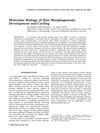 155 citations
,
August 2003 in “Journal Of Experimental Zoology Part B: Molecular And Developmental Evolution”
155 citations
,
August 2003 in “Journal Of Experimental Zoology Part B: Molecular And Developmental Evolution” Understanding hair growth involves complex interactions between molecules and could help treat hair disorders.
21 citations
,
June 2003 in “Journal of Morphology” The study examined the distribution of keratin and associated proteins in the epidermis of monotreme and marsupial mammals, comparing them to eutherian mammals. It found significant interspecific variation in keratohyalin granules (KHGs) size and distribution, particularly in hairless or low-density hair regions. Monotreme and marsupial epidermis showed similarities to eutherians in the distribution of acidic and basic proteins, but differences in the cross-reactivity of antibodies against certain proteins like involucrin and trichohyalin, suggesting species-specific molecular structures. Loricrin distribution in monotremes resembled that in reptiles and birds, indicating a primitive pattern of amniote α-keratogenesis. The study suggested that the presence of loricrin-like proteins in amniote corneous tissues is a primitive feature, and the redistribution mechanism in monotreme keratinocytes might be less specialized than in therian mammals.
425 citations
,
August 2002 in “BioEssays” The cornified cell envelope forms a protective barrier in skin and hair, using specific proteins and lipids to maintain effectiveness.
854 citations
,
February 2002 in “The journal of investigative dermatology/Journal of investigative dermatology” Understanding hair follicle development can help treat hair loss, skin regeneration, and certain skin cancers.
686 citations
,
February 2002 in “Current Opinion in Cell Biology” 272 citations
,
September 2001 in “Journal of Biological Chemistry” The study cataloged human type II hair keratins, identifying six members divided into two groups: group A (hHb1, hHb3, hHb6) and group C (hHb2, hHb4, hHb5). Using specific antisera, a two-dimensional catalog was established, revealing isoelectric variants and their roles in hair differentiation. hHb5 and hHb2 were linked to early hair differentiation stages, while hHb1, hHb3, and hHb6 were expressed in advanced stages. hHb4 was found in the tongue, not hair follicles. The study suggested random keratin-pairing during differentiation and integrated type II keratins with type I and epithelial keratins into a comprehensive human keratin catalog.
41 citations
,
January 2001 in “Journal of Investigative Dermatology” 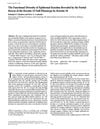 53 citations
,
September 1999 in “The journal of cell biology/The Journal of cell biology”
53 citations
,
September 1999 in “The journal of cell biology/The Journal of cell biology” K16 can partially replace K14 but causes hair loss and skin issues.
235 citations
,
July 1999 in “Journal of biological chemistry/The Journal of biological chemistry” Human hair is made up of different keratins, some strong and some weak, with specific types appearing at various stages of hair growth.
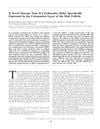 139 citations
,
December 1998 in “The journal of investigative dermatology/Journal of investigative dermatology”
139 citations
,
December 1998 in “The journal of investigative dermatology/Journal of investigative dermatology” K6hf is a unique protein found only in a specific layer of hair follicles.
24 citations
,
November 1997 in “Journal of Biological Chemistry” 135 citations
,
October 1997 in “Journal of biological chemistry/The Journal of biological chemistry” Trichohyalin is modified by enzymes to form strong structures in hair cells.
55 citations
,
May 1995 in “The journal of investigative dermatology/Journal of investigative dermatology” 54 citations
,
November 1994 in “Differentiation” 72 citations
,
May 1993 in “The Journal of Cell Biology” 64 citations
,
April 1992 in “Differentiation” 745 citations
,
February 1992 in “Trends in genetics” Hair follicles create different cell layers and proteins, controlled by various molecules.
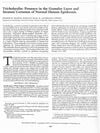 48 citations
,
May 1991 in “The journal of investigative dermatology/Journal of investigative dermatology”
48 citations
,
May 1991 in “The journal of investigative dermatology/Journal of investigative dermatology” Trichohyalin is also found in the outer layers of normal human skin.
252 citations
,
January 1991 in “Electron Microscopy Reviews” 248 citations
,
April 1988 in “Differentiation” 126 citations
,
January 1987 in “Current topics in developmental biology/Current Topics in Developmental Biology” 81 citations
,
January 1987 in “Current topics in developmental biology/Current Topics in Developmental Biology” 116 citations
,
April 1986 in “The journal of cell biology/The Journal of cell biology” Trichohyalin is a protein in hair follicles that helps form hair filaments.
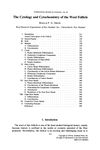 90 citations
,
January 1979 in “International review of cytology”
90 citations
,
January 1979 in “International review of cytology” Wool follicles are complex, involving interactions between different cell types and structures.





